calsfoundation@cals.org
Birds
The birdlife of Arkansas (its avifauna) comprises just over 400 species, although that number includes more than forty species that have been extirpated (that is, they no longer occur) in the state, are completely extinct, or are rarities that have strayed into Arkansas fewer than a half dozen times. Around 350 species, then, can be found in Arkansas with some regularity. About 145 species nest within the state. Others nest north of Arkansas and spend the winter here or pass through the state in spring and fall as they migrate to and from nesting grounds to the north and wintering areas to the south.
Arkansas’s location in the south-central United States means that its avifauna is generally typical of North America’s eastern deciduous forest. Several species, though, are more associated with warmer, drier, less-forested habitats to the southwest. Some of these southwestern birds have become more common in Arkansas in recent decades, perhaps because of land clearing and/or climate change.
Common Birds
Common nesting birds of Arkansas’s deciduous woodlands include wild turkey, red-tailed hawk, broad-winged hawk, yellow-billed cuckoo, great horned owl, eastern screech-owl, chuck-will’s-widow, ruby-throated hummingbird, red-bellied woodpecker, downy woodpecker, eastern wood-pewee, Acadian flycatcher, great crested flycatcher, red-eyed vireo, American crow, Carolina chickadee, tufted titmouse, Carolina wren, blue-gray gnatcatcher, wood thrush, black-and-white warbler, Kentucky warbler, summer tanager, and Baltimore oriole. Some of these species leave Arkansas in winter, when such birds as yellow-bellied sapsucker, brown creeper, ruby-crowned kinglet, hermit thrush, cedar waxwing, yellow-rumped warbler, dark-eyed junco, and white-throated sparrow take up residence in woodlands.
Breeding birds of open fields, brushy pastures, and early successional second-growth woods include northern bobwhite, killdeer, mourning dove, eastern kingbird, white-eyed vireo, American robin, eastern bluebird, northern mockingbird, blue jay, yellow-breasted chat, field sparrow, northern cardinal, indigo bunting, dickcissel, common grackle, eastern meadowlark, and brown-headed cowbird. Wintering birds of these habitats include northern harrier, sedge wren, and various sparrows. Agricultural fields in eastern Arkansas are often home to large flocks of wintering greater white-fronted, snow, and Canada geese.
The pine forests of Arkansas provide nesting habitat for the endangered red-cockaded woodpecker, as well as brown-headed nuthatch, pine warbler, and Bachman’s sparrow.
Arkansas’s lakes, ponds, streams, marshes, and wooded swamps host nesting birds such as wood duck, pied-billed grebe, great blue heron, cattle egret, great egret, green heron, red-shouldered hawk, barred owl, belted kingfisher, common yellowthroat, and red-winged blackbird. In winter, these wetlands are home to more than a dozen species of ducks, as well as common loon, double-crested cormorant, ring-billed gull, sedge wren, American pipit, and rusty blackbird. The bottomland hardwood swamps of eastern Arkansas host one of the world’s largest wintering populations of mallards, target of sport hunters who make a significant contribution to the regional economy.
Other common Arkansas breeding birds of more-specialized habitats include black vulture, turkey vulture, chimney swift, eastern phoebe, purple martin, barn swallow, house finch, and house sparrow.
Rare and Extinct Species
The Ozark and Ouachita mountain areas of western Arkansas still retain a high percentage of their original forest cover, thanks in large part to two national forests totaling around three million acres. But human alteration of the environment and other factors have created notable changes to the region’s avifauna since European settlement.
Famed nineteenth-century naturalist and bird artist John James Audubon traveled down the Mississippi River on Arkansas’s eastern border, and in 1822 he went up the Arkansas River to the community of Arkansas Post (Arkansas County). Here, he found the only species of bird ever originally discovered in Arkansas: a bird he called Traill’s flycatcher, now renamed willow flycatcher. The willow flycatcher is today an extremely rare breeding bird in Arkansas in danger of extirpation. In Audubon’s time, an expanse of grassland called the Grand Prairie stretched across 500,000 acres of eastern Arkansas, and other tracts of tallgrass prairie were scattered across Arkansas. The state has lost nearly all its prairie habitat to agriculture and other development, and with it the greater prairie-chicken, a grassland bird last seen in the state in the 1930s.
Special mention should be made of another bird Audubon saw in Arkansas: the ivory-billed woodpecker. Declining rapidly as the great virgin forests of the southeastern United States were cut, the ivory-bill was extremely rare by the early twentieth century. It was last known in Arkansas in 1915 and was thought to have become completely extinct in the United States in the 1940s. In 2004–2005, though, a series of sightings led a scientific team to announce that the ivory-billed woodpecker had been rediscovered in Cache River National Wildlife Refuge in eastern Arkansas. The claim gained headlines around the world and brought hundreds of people to Arkansas to look for the bird. No confirmed sightings were made afterwards, however, and some ornithologists (biologists specializing in birds) have since disputed evidence for the rediscovery.
The Carolina parakeet and the passenger pigeon, both formerly common in Arkansas, were hunted and otherwise driven to extinction in the early twentieth century. The Bachman’s warbler, a small yellow bird of the swamps, was once found in eastern Arkansas, but it, too, is presumed to be extinct.
Happier stories can be told about two raptors, the bald eagle and the osprey. Both nested in Arkansas in pioneer times, both disappeared from the state as breeding birds because of persecution and contamination by the pesticide DDT, and both have made comebacks to breed here once again. The bald eagle has made an especially strong recovery, with several dozen active nests in the state each year.
Environmental Change and Conservation
The Mississippi Alluvial Plain of eastern Arkansas (the Delta) has had far greater changes to its environment than have the forests of western Arkansas. Once a vast system of rivers, bayous, bottomland-hardwood swamps, marshes, and seasonal wetlands, this area has seen its rivers straightened and channeled, its wetlands ditched and drained, and its once-continuous forests turned into cropland. Bird life suffered, of course, along with other wildlife and plant diversity. However, conservationists have managed to set aside refuges and wildlife areas for protection, and efforts to restore and expand wetlands and forests continue. Among the species that have declined along with wetland loss are wood duck, pied-billed grebe, anhinga, least bittern, red-shouldered hawk, king rail, purple gallinule, and common moorhen.
When the environment changes, some species suffer while others benefit. Species more common in Arkansas today than in pre-settlement times include snow goose, American robin, eastern meadowlark, and red-winged blackbird—all open-country birds that have more habitat now than before forests were cleared.
Growth of the Arkansas fish-farming industry has led to the construction of thousands of acres of shallow ponds in the eastern part of the state. When these ponds are drained to harvest fish, the muddy bottoms create ideal habitat for shorebirds such as plovers and sandpipers. In both spring and fall, tens of thousands of migrating shorebirds pause to rest and feed in these ponds, a phenomenon not present in Arkansas a century ago.
Other species more common now than in previous decades include several that have spread into the state from the southwest. These are mostly open-country birds that once would have been blocked from expansion by continuous forests; as land has been cleared, their ranges have grown. Some—the greater roadrunner and scissor-tailed flycatcher—are widespread, while others have just begun to move into Arkansas, or to show up more often as strays, among them black-bellied whistling-duck, fulvous whistling-duck, white-tailed kite, white-winged dove, and Inca dove.
Still other birds are found in Arkansas in the twenty-first century that were not in the area when the first Europeans settlers arrived. Some are species originally introduced into North America by humans, while others seem to have spread naturally. These relative newcomers include cattle egret, rock pigeon (the common city pigeon), Eurasian collared-dove, European starling, house finch, and house sparrow.
In July 2020, two species were found nesting for the first time in Arkansas (rather than just migrating through): the roseate spoonbill and the white-faced ibis. The Arkansas Game and Fish Commission credits management under the Arkansas Natural Resources Conservation Service (NRCS) Wetland Reserve Program for helping to restore the wetlands that host these birds.
Birdwatching
Many sites around Arkansas offer the opportunity to observe a wide variety of the state’s birds. Among them are Holla Bend National Wildlife Refuge (NWR) in west-central Arkansas, Wapanocca NWR in the northeast, and Bald Knob NWR in the north-central area, as well as state parks such as Village Creek State Park in the east, Devil’s Den State Park in the northwest, Mount Magazine State Park in the west, and Lake Chicot State Park in the southeast. Lake Millwood, in southwestern Arkansas, is home to large numbers of ducks, loons, grebes, gulls, and other waterbirds from fall through spring. The Arkansas River acts as a migration route for ducks, American white pelicans, double-crested cormorants, ospreys, bald eagles, gulls, terns, and many other species in spring and fall.
For additional information:
Arkansas Audubon Society. http://www.arbirds.org (accessed February 9, 2023).
James, Douglas A., and Joseph C. Neal. Arkansas Birds: Their Distribution and Abundance. Fayetteville: University of Arkansas Press, 1986.
Wessels, Jacob L. “Cerulean Warbler Habitat Selection, Breeding Biology, Survival and Space Use in the Ozark Region.” MS thesis, Arkansas State University, 2020.
Mel White
Little Rock, Arkansas
 Aquaculture
Aquaculture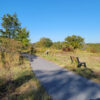 Audubon Arkansas
Audubon Arkansas Extinct Animals [Prehistoric Period]
Extinct Animals [Prehistoric Period] James, Douglas Arthur
James, Douglas Arthur Official State Bird
Official State Bird Arkansas Anatids
Arkansas Anatids  Baby Buzzards
Baby Buzzards  Bachman's Warbler
Bachman's Warbler  Bald Eagle
Bald Eagle  Bayou Meto Duck Hunters
Bayou Meto Duck Hunters  Brown-Headed Cowbird
Brown-Headed Cowbird 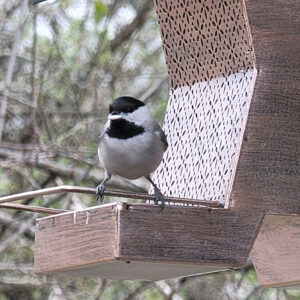 Carolina Chickadee
Carolina Chickadee  Chipping Sparrow
Chipping Sparrow  Dark-Eyed Junco
Dark-Eyed Junco  Eastern Bluebird
Eastern Bluebird  Eastern Meadowlark
Eastern Meadowlark  Eastern Screech Owl
Eastern Screech Owl  Egret at Millwood Lake
Egret at Millwood Lake  Great Blue Heron
Great Blue Heron  House Finch
House Finch  Hummingbirds
Hummingbirds  Indigo Bunting
Indigo Bunting  Interior Least Tern
Interior Least Tern  Interior Least Tern Nestlings
Interior Least Tern Nestlings 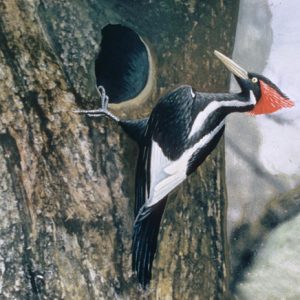 Ivory-billed Woodpecker
Ivory-billed Woodpecker  Little Rock Zoo
Little Rock Zoo 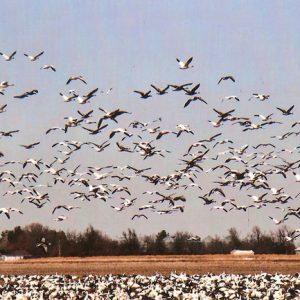 Mississippi Flyway
Mississippi Flyway  Northern Cardinal
Northern Cardinal  Northern Cardinal
Northern Cardinal  Pelicans Migrating
Pelicans Migrating  Red-bellied Woodpecker
Red-bellied Woodpecker  Red-cockaded Woodpecker
Red-cockaded Woodpecker  Red-tailed Hawk
Red-tailed Hawk  Roadrunner
Roadrunner  Roadrunner
Roadrunner  Snow Geese at Paroquet
Snow Geese at Paroquet  Swans during Migration
Swans during Migration  Tufted Titmouse
Tufted Titmouse  Turkey Hunters
Turkey Hunters 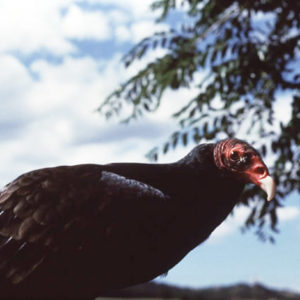 Turkey Vulture
Turkey Vulture  Wild Turkey
Wild Turkey 




Comments
No comments on this entry yet.